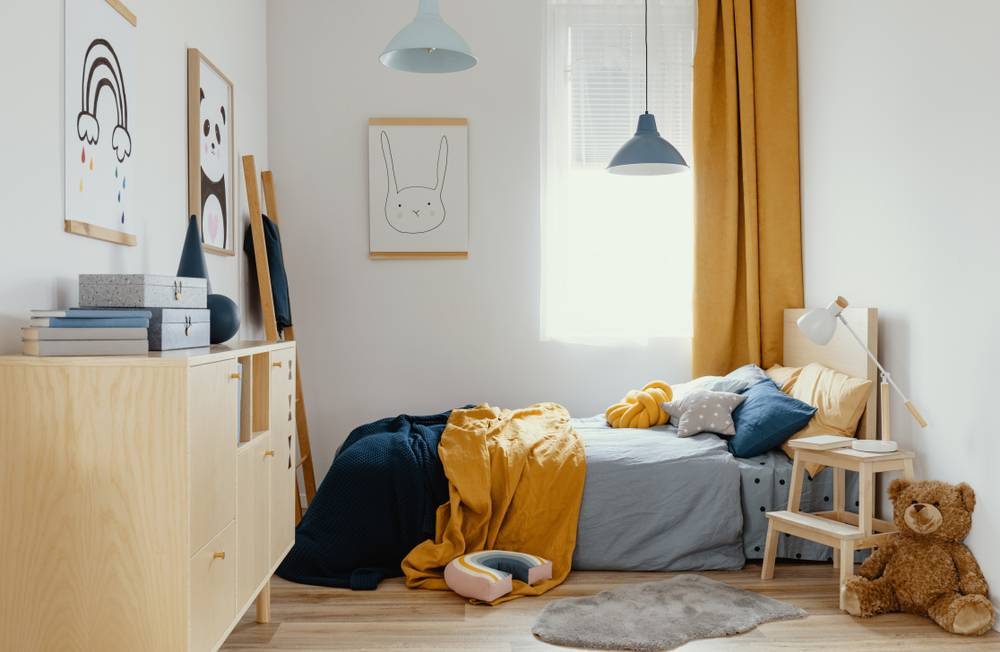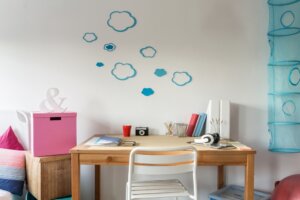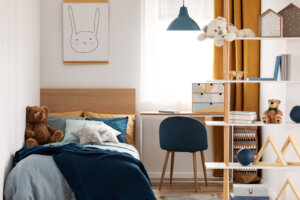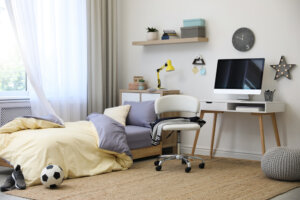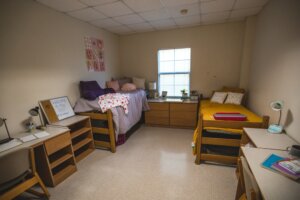It seems that once the calendar turns to August, all we can think about is gearing up for back to school. Even though there is plenty of summer heat and lazy days left, parents and students alike start prepping for the school year ahead.
Set your student up for success by giving them the best study space. We’ve put together a list of things to consider when creating a study space for students of all ages. No matter the grade, here are 4 key elements to consider.
Primary School
For the littlest of students just starting out, there’s not a lot of preparation needed. Kindergarteners typically spend their time in school learning colours and how to count, but having their own space to grow and learn will help encourage them to make use of their study space down the road.
1. Desk/chair/furniture
Focusing on small furniture that is easy to clean is ideal. Having low to the ground tables and chairs lets little ones really get involved in their activities. Let’s be honest, it’s hard to get little kids to sit still, never mind expecting them to sit still long enough to work on their ABC’s. While a mini sized desk might be cute, a table with lots of space is a more practical idea.
2. Lighting and location
At this age, it’s best to keep the kids within eyesight. They may have intended to only colour on the paper in front of them but by the time you turn around you’ve got a freshly Crayon-d wall. Creating a workspace might be best if it’s in a corner of the living room or kitchen. This way they’re free to create but you don’t have to worry about what wall is their next canvas.
3. Materials and storage
Crafts, crafts, crafts. Proper storage is really essential at this age. Kids are going to make a mess, that’s a fact, but having to look at it all the time is fiction. Look for storage units that can store a lot but also look nice.
4. Homework
Kids at this age won’t be receiving a lot of real homework and instead will be bringing home creations they’ve made that day. They’ll want to show off the work they’ve done and be proud. A bulletin or magnetic board is a great way to keep the rotation of art moving.
Elementary
Once your scholar begins elementary school the homework starts rolling in. Creative projects coupled with light research papers and reading will be the focus of their time. Having space to spread out their work and keeping track of their assignments is key to a successful study space.
1. Desk/chair/furniture
Now is the time to invest in a proper desk. As your child grows so too does the work load and a full sized desk will help them. A comfortable desk chair will help them adjust to this new task of sitting down and focusing on additional school work. You can still make the space fun by accessorizing with playful pieces and adding pops of their favourite colour.
2. Lighting and location
Once in elementary school, homework can be done in their room, or in a specific kids study zone. Give them some independence but still within eye sight so you can make sure they really are memorizing the provinces and not doodling. Proper lighting is always a good idea. Not only does it help you stay focused, it helps prevent eye fatigue and headaches. A funky lamp is another great way to add personality to their space.
3. Materials and storage
Students in elementary school will be working on a wide variety of projects from presentations to book reports and mini-essays. This means they’ll need a wide variety of tools to help them get the job done. Again, storage is a big factor. You’ll want to have everything they need easily accessible and easy to put away as well. A big wall calendar is also a good idea to organize assignments and activities. This way both of you know what’s going on and when. Using chalkboard paint is an easy and creative way to create a wall calendar in your kid’s study space. It can also be used to help kids work on assignments when sitting at a desk becomes boring.
4. Homework
For those bigger science projects and art masterpieces, you’re going to need space and maybe a tarp and safety goggles. We suggest working on those projects outside.
High School
Once your student enters high school their whole world is turned upsidedown. Suddenly they’re real teenagers with real teenage problems. Let’s not forget the growing workload as well. High school is really a transitional phase and depending what classes your teen’s school offers, their interests and study space needs will be different.
1. Desk/chair/furniture
High school students are going to be spending a lot of time researching and writing. This means they’ll need a good space for writing, outlets for laptops, and potentially a comfortable reading chair if you want to step up the style (this will probably end up being a place to throw their laundry, but you can try to encourage a reading chair).
2. Lighting and location
Teens want to be alone so making their bedroom into a functional study space is your best bet. They’re going through a lot and reading Lord Of the Flies isn’t helping them deal with finding a date to the dance. Send them to their room to focus on their school work and shut the door until dinner.
3. Materials and storage
With the exception of teens who are in art or technical schools, high schoolers spend a lot of time reading and studying. While they’ll need storage for their books, they mostly carry everything with them and store it in their lockers. Investing in some bookshelves and baskets will help with storage and organization.
4. Homework
Essays and reports will keep these kids busy for four years. They’ve also got sports, clubs and jobs to fit into their already packed social schedules. Again, we suggest a big wall calendar to keep them organized. There are lots of DIY options they can make themselves, or you can shop for one that’s a little more “grown-up” looking than the one they had in elementary school.
College/University
Whether your college/university student is planning to stay at home or move out to a dorm room, they’re still going to need the right space to help them in their higher education pursuits.
1. Desk/chair/furniture
It might be time to upgrade your student’s space by springing for a desk and chair they’ll hopefully continue to use once they graduate and get their own place. If your student is entering their first year, most institutions provide a desk, so be sure to check before you buy.
2. Lighting and location
Students will most likely be spending a lot of time at the library and late nights at home writing essays that seem to never end. A location that allows them to focus is necessary. Swap out bright overhead lighting for a desk lamp. A good desk lamp will ensure all key facts are seen and absorbed during late night cramming sessions.
3. Materials and storage
Notebooks and pens are useful for taking notes in labs and workshops, but with today’s technology, the only thing modern-day academics really need is a laptop.
4. Homework
With more assignments and homework than ever before, organization and scheduling are keys to success. Make sure you send your student off to school with the right tools to help them organize their assignments. Whether that means buying a new an agenda, wall calendar, or a combination of things, make sure they’re prepared.
Having a functional, organized and fun space is important for kids of all ages. Try to incorporate some of these tips and see if it helps with homework at all. Our guess is your kids will still hate doing it, but they might enjoy hanging out in the space a little bit more. Most importantly, remember to enjoy these last few weeks of summer before school starts!
